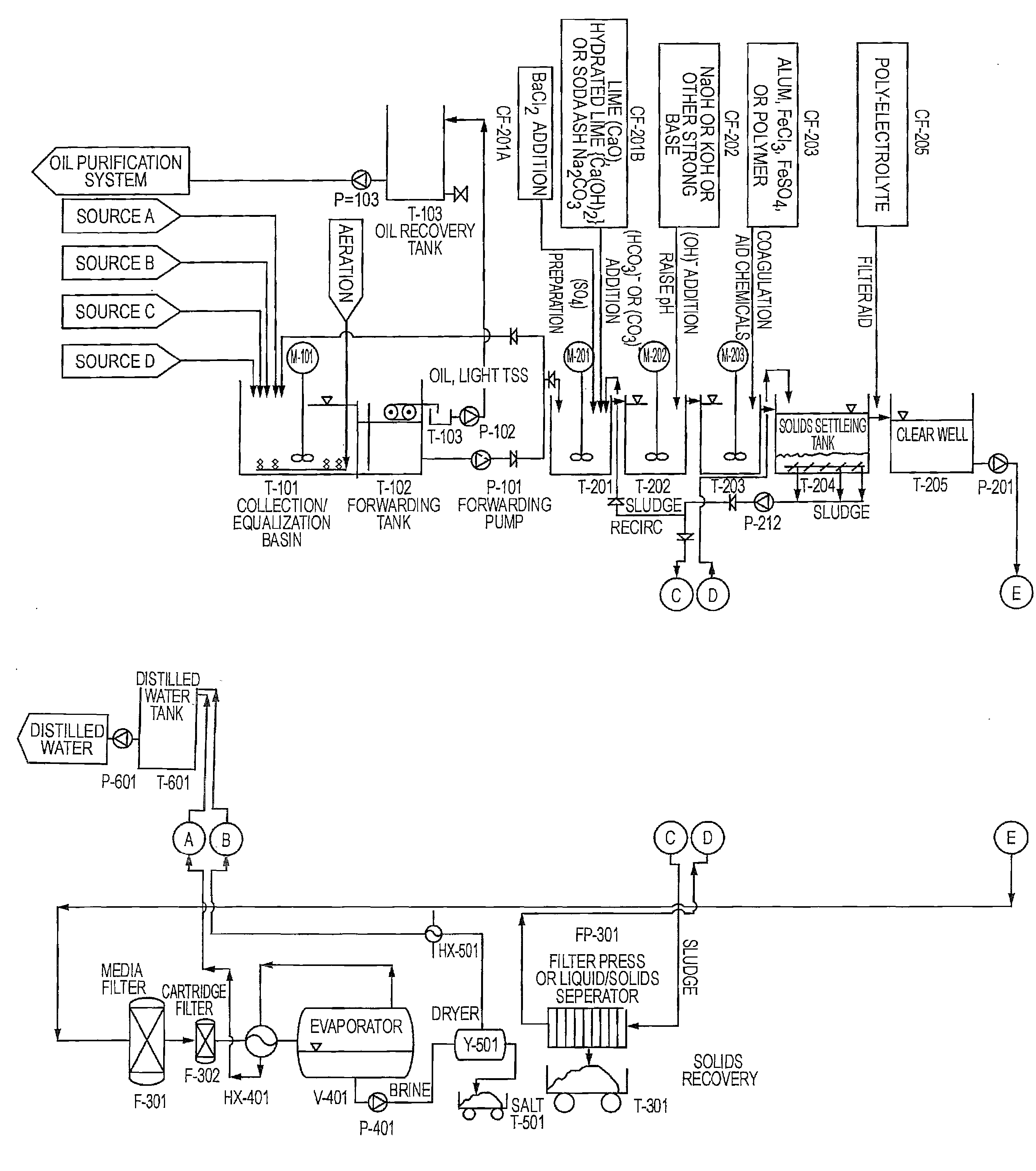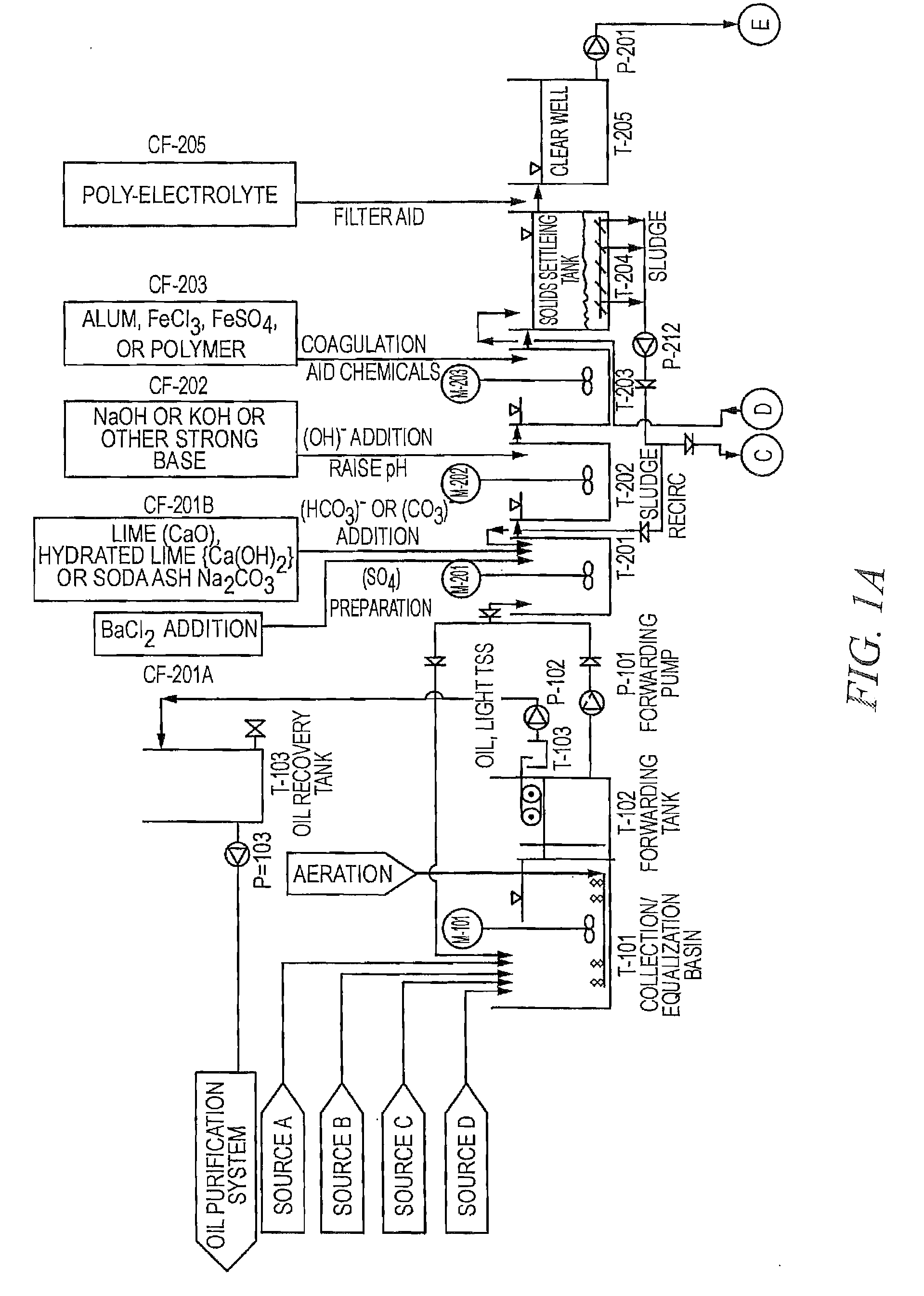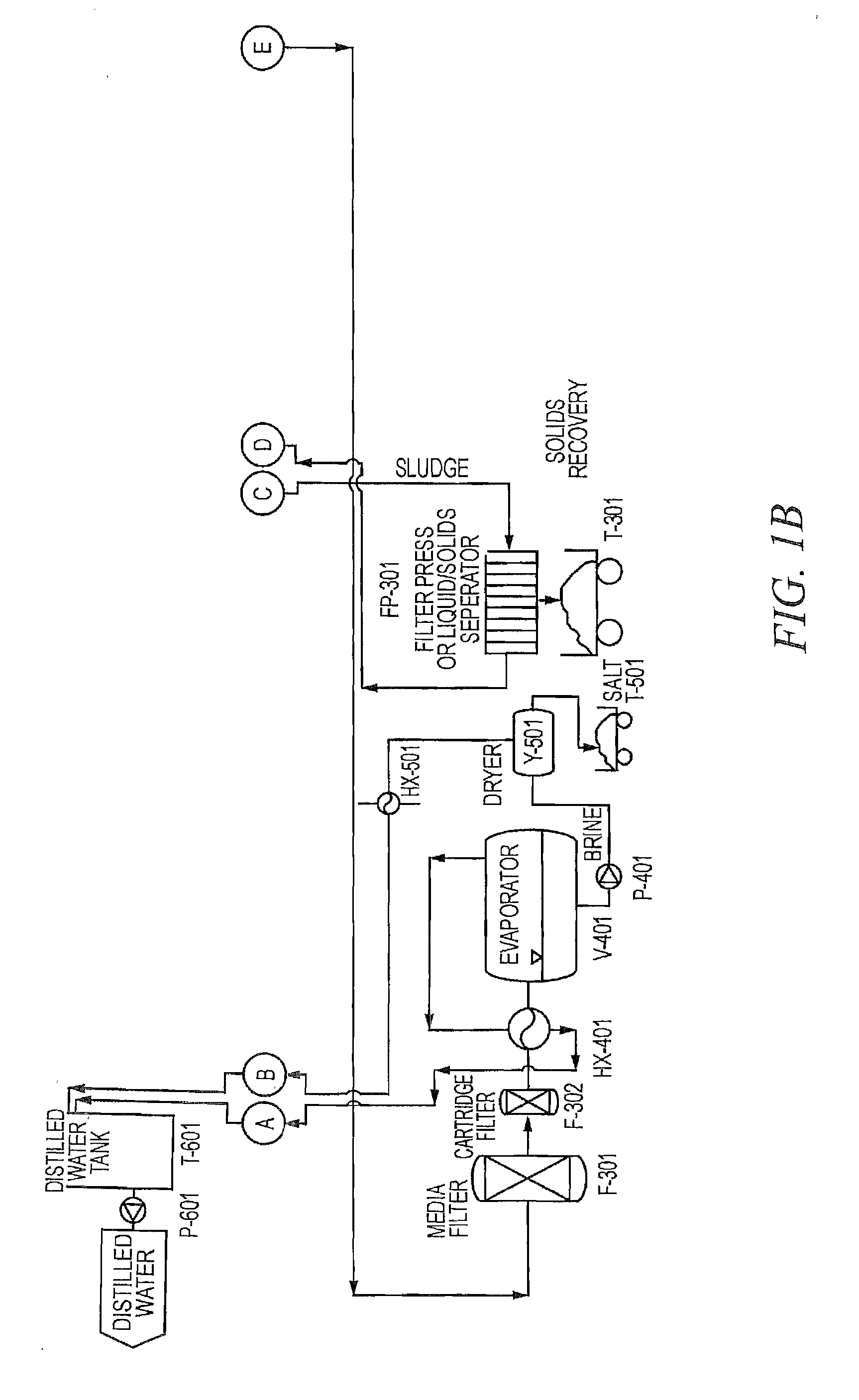High Efficiency Water-Softening Process
a water softening process and high-efficiency technology, applied in water softening, multi-stage water/sewage treatment, separation processes, etc., can solve the problems of difficult to ensure that lime (cao) or hydrated lime (ca, ) goes effectively into solution, calcium, magnesium, silica, barium or strontium deposits could form devastating scales on process components, etc., to achieve the effect of reducing contaminant conten
- Summary
- Abstract
- Description
- Claims
- Application Information
AI Technical Summary
Benefits of technology
Problems solved by technology
Method used
Image
Examples
Embodiment Construction
[0041]The novel, high-efficiency softening process disclosed herein is a process that is extremely effective in treating highly contaminated surface waters such as well waters, waste water and process effluent streams. Specifically, the process disclosed facilitates the effective removal and / or reduction of certain inorganic contaminants such as calcium (Ca), magnesium (Mg), barium (Ba), strontium (Sr), iron (Ferrous Fe++ or Ferric Fe+++), manganese (Mn), zinc (Zn), and silica (SiO2), as well as certain species such as oil, grease, total organic carbon (hereinafter “TOC”), biochemical oxygen demand (hereinafter “BOD”), total suspended solids (hereinafter “TSS”), and colloidal material.
[0042]These contaminants can be found in naturally occurring waters from almost all sources, including rivers, lakes, and the ocean. They can also be found in industrial, as well as municipal, wastewater streams, such as those waters produced from oil and gas drilling operations. These contaminants can...
PUM
| Property | Measurement | Unit |
|---|---|---|
| Fraction | aaaaa | aaaaa |
| Fraction | aaaaa | aaaaa |
| Fraction | aaaaa | aaaaa |
Abstract
Description
Claims
Application Information
 Login to View More
Login to View More - R&D
- Intellectual Property
- Life Sciences
- Materials
- Tech Scout
- Unparalleled Data Quality
- Higher Quality Content
- 60% Fewer Hallucinations
Browse by: Latest US Patents, China's latest patents, Technical Efficacy Thesaurus, Application Domain, Technology Topic, Popular Technical Reports.
© 2025 PatSnap. All rights reserved.Legal|Privacy policy|Modern Slavery Act Transparency Statement|Sitemap|About US| Contact US: help@patsnap.com



